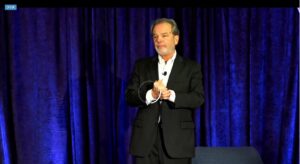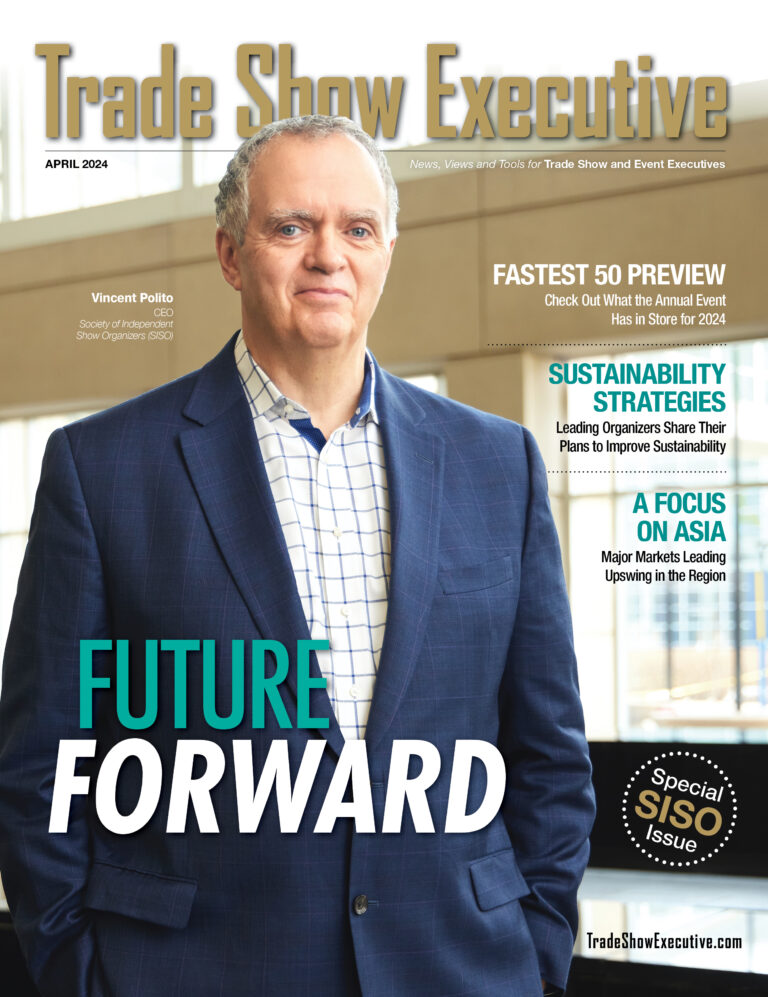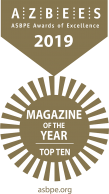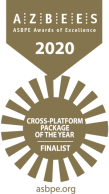
The Exhibition and Convention Executives Forum (ECEF) met in person for the first time in two and a half years on Nov. 3 at the Hyatt Regency Crystal City in Arlington, Va. In addition to celebrating the event’s 20th anniversary, the 182 independent and association trade show executives at the show celebrated the opportunity to be face to face again with animated discussions and avid listening to the four-one-hour educational sessions. Another 19 tuned in remotely for the livestreamed broadcast on Freeman’s OnlineEvent platform, which also hosted an online ECEF experience that ran from Nov. 1–5.
Here are five top takeaways from this year’s event:
1) Renew your focus on networking. This year’s event put the main focus on networking, from the opening reception to the areas of interest and activations surrounding the ballroom that were designed to spur serendipitous conversations during the one-hour breaks between the four one-hour sessions of C-level content.
As President and Founder of Lippman Connects Sam Lippman noted, “The most important thing about in-person events is the chance meetings that can change your life, that can improve your career and change the direction of your show.” In fact, one of the five trends he noted in his “5 Data Points in 5 Minutes” was that people look to in-person and online events to fulfill different needs, and the top itch people want to scratch at in-person events is networking, while education tops the list for online events. “We have to lean into what works for each,” Lippman said, and this year’s ECEF did just that, with the livestreamed sessions for online attendees and extended breaks for in-person attendees to build connections. Lippman Connects organizes ECEF, as well as the Large Show Roundtable (LSR), the Attendee Acquisition Roundtable (AAR) and the Exhibit Sales Roundtable (ESR).
Related. ECEF 2020: Attention is the New Currency
2) How to recover when your biggest asset becomes your biggest liability risk — and how to rebalance revenue sources moving forward. John Hoffman, CEO of GSMA, was very matter of fact about what it was like to have to cancel the Mobile World Congress 2020 in Barcelona due to the coronavirus — and how his organization managed the pivot to virtual and then back again as vaccines, testing and other health and safety protocols made it again possible to meet in person.
While his shows now are attracting smaller numbers than in the past, that’s by design. Hoffman noted that those who are coming now to GSMA’s events are higher echelon. “Our price point is high on purpose because we’re trying to attract really senior folks” and discourage the tire-kickers. “For the next 24 months, quality and return on investment in financials and time…will be the secret sauce” because no one wants to go back to the level of travel they used to do. GSMA also is working to rebalance its revenue sources so that, instead of 70% coming from events, 20% from membership dues and 10% from platforms and services, it’s more like an even third from each area.
3) Create FOMO for forward momentum. Monique Ruff-Bell, Event Director of Money20/20 USA, and Richard Scarfo, President of HLTH shared strategies that have helped them recoup and recover. At the top of the list is creating connections and providing experiences attendees can’t get anywhere else. As Ruff-Bell said, “We wanted to create FOMO because our community is going to be our best word-of-mouth advertisers. They did exactly that for us, and they can do the same for you.” Scarfo kept exhibitors happy by providing several ways to participate, from just attending to buying booths to being part of a hosted buyer program.
4) Don’t be afraid of change. As someone who was a newcomer to trade shows just a year and a half ago, John Cordier provided a fascinating perspective on how the pandemic surfaced new innovations and accelerated others across industries. Cordier is CEO of infectious disease modeling company Epistemix, which has applied its modeling to trade shows and venues to help them determine what risks COVID posed and develop mitigation strategies to use for a specific event at a specific location and time. But he also provided a bigger picture perspective from modeling based on sociology and population dynamics.
Exhibition center architect Robert Svedberg, Principal, TVSDESIGN, gave the venue side of the equation, including 10 things that will (and will not) change. Among them are changes most won’t even see, such as upgrades in ventilation. Others may be considered more “health theater,” but that’s OK, he said. “If people want hand-washing stations, give them hand-washing stations. It’s not a bad thing to wash your hands,” whether or not it helps reduce COVID transmission.
5) Understanding digital event data is imperative. Robyn Davis, CEO of Exhibitors WINH and Rhonda Wunderlin, Senior Vice President, Performance Marketing at Questex walked participants through a set of standards developed by the International Association of Exhibitions and Events (IAEE), UFI, the Society of Independent Show Organizers (SISO) and dozens of other companies and organizations. With a glossary of more than 150 terms and 18 data tables, the purpose is to help everyone involved understand the various terms involved and use a common language.
Reach Sam Lippman at (703) 979.4904; sam@lippmanconnects.com











